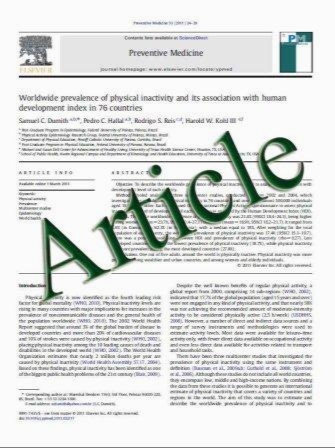IGFBP1 and IGFBP3 polymorphisms predict circulating IGFBP-3 levels among women from high-risk breast cancer families
- نوع فایل : کتاب
- زبان : انگلیسی
- مؤلف : Ann H. Rosendahl Maria Hietala Maria Henningson Ha°kan Olsson Helena Jernstro¨m
- چاپ و سال / کشور: 2010
Description
The insulin-like growth factor (IGF) pathway has been implicated as risk modifier in premenopausal breast cancer. In this study, associations between single nucleotide polymorphisms (SNPs) and diplotypes in the IGFBP1 and IGFBP3 genes and circulating IGFBP-3 levels, BRCA family status and breast cancer among women from high-risk breast cancer families were investigated. Nine IGFBP1 and IGFBP3 SNPs were genotyped with PCR-based methods in 323 women. Nine IGFBP1 and ten IGFBP3 diplotypes were identified. Plasma IGFBP-3 levels obtained during cycle day 18–23 were available for 231 women, 87 current users of combined oral contraceptives and 144 non-users. IGFBP1 (rs1995051 and rs4988515) and IGFBP3 (rs2471551 and rs2854744) SNPs were associated with circulating IGFBP-3 levels (P\0.05). IGFBP1low diplotypes were associated with lower IGFBP- 3 levels and were more common in BRCA2 families OR 2.05 (95%CI 0.97–4.30). IGFBP3high diplotypes were associated with higher IGFBP-3 levels and were more common in BRCAX families OR 1.68 (95%CI 1.04–2.74). After adjusting the models for BRCA family status, both the BRCA1 and BRCA2 family status (P B 0.006) and the IGFBP1 diplotype GTAC/ACAT (P = 0.004) were associated with lower IGFBP-3 levels. Similarly, both the BRCA1 and BRCA2 family status (P B 0.03) and the IGFBP-3 diplotypes GCA/GCG (P = 0.007) and GCG/ CCG (P = 0.002) were significantly associated with lower IGFBP-3 levels, adjusted for age, weight, OC use, and other IGFBP diplotypes. No individual SNP was associated with breast cancer. There were 23 cases of breast cancer and one IGFBP1 diplotype was associated with a decreased risk of breast cancer after age 18 (log rank P=0.05). In conclusion, independent effects from IGFBP1, IGFBP3 diplotypes, and BRCA family status on IGFBP-3 levels were observed. These factors may influence the risk of breast cancer among women from high-risk breast cancer families.
1.Breast Neoplasms 2.Neoplasms


